The Bible – Divisions, Books, Chapters, and Verses
by Dan Severson
What is the Bible? – Divisions, Books, Chapters, and Verses
Since ancient times, the Bible has been separated into books. In the late Middle Ages, each book was divided for easy reference into larger chapters, and a few centuries later the chapters were further divided into smaller verses. The translation the Lutheran Church uses is called the New Revised Standard Version (NRSV). This is based on a series of English translations of the Bible – first was The King James translation (17th century) which uses Elizabethan English. In the 1950s, a new translation (The Revised Standard Version) was created to update the text to English usage at that time. The NRSV is further updated based on improved knowledge of ancient Hebrew, and was translated by a committee of scholars.
It is worth noting that not every translator agrees on what a Hebrew word means. This has resulted in many different translations, some of which are very bad. Additionally, people from different theological traditions often allow their confessional standards to color the way they translate the Bible. Translating the Bible is difficult and complex, so it is best to use the ones that been described as the most accurate based on present knowledge.
In Jewish tradition, the Bible has three parts – the Torah, the Prophets, and the Writings from the first letters of the Hebrew words for these parts (Torah, Neviim, Ketuvim) comes the frequently used acronym Tanakh. For Jews, Tenakh is simply the Bible; scholars often refer to it as the Hebrew Bible in preference to the Christian term Old Testament which is different in terms of content and order of books.
The first five books of the Bible to be considered canonical are Genesis, Exodus, Leviticus, Numbers, and Deuteronomy – known as the Torah. The Hebrew word Torah means “teaching” or “law”. These books are linked by a continuous narrative chronology from creation at the beginning of Genesis to the death of Moses at the end of Deuteronomy. Until modern times, these five books were considered the teachings of Moses and Moses was thought to be their author, however few scholars still accept that in its literal sense.
The second part of the canon in the Jewish tradition is the Prophets which has two divisions. The Former Prophets consist of the books of Joshua, Judges, Samuel, and Kings, which continue the narrative chronology of the Torah. They begin immediately after the death of Moses with the divine appointment of Joshua as his successor, and recount the history of the Israelites in the Promised Land, from their entry into it under Joshua’s leadership to their loss of it in 586 B.C. The Latter Prophets are the books named after individual prophets. These are sometimes divided into the Major Prophets (Isaiah, Jeremiah, and Ezekiel) and the Minor Prophets (the twelve shorter books from Hosea through Malachi. The Prophets link historical narratives with prophesy, and serve the purpose of communicating the divine will as it relates to the historical context of the prophet. These books include interpretation communicated through divinely informed interpreters or prophets.
The third division of the Jewish canon, the Writings, contains a variety of books in different genres. Some are historical narrative, such as Chronicles, Ezra, and Nehemiah. The Writings also include what modern scholars identify as historical fiction (Ruth, Esther, and Daniel), reflections on the human condition (Job), and the poetical books of Psalms, Proverbs, Song of Solomon, Lamentations, and Ecclesiastes.
The books of the Torah were the first to be considered canonical, sometime in the sixth century B.C. By the second century B.C., the Prophets also had canonical status. However, it was not until the New Testament period that all the books that are part of the Hebrew bible were mentioned. In 100 A.D., a group of rabbis descended from the Pharisees gathered in the coastal village of Jamnia and selected the canon as we know it. This became the collection Luther picked for the protestant bible. The Septuigent, a Greek translation in use at the time of Jesus, is used in Roman Catholic Bibles.


